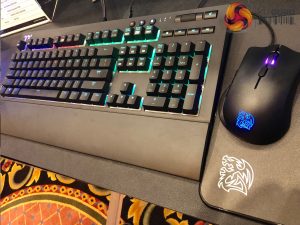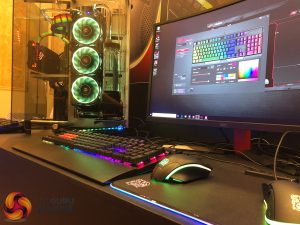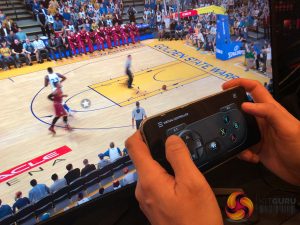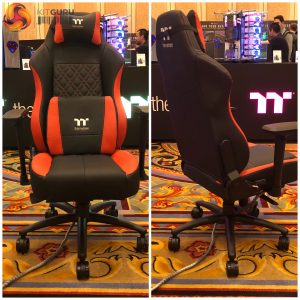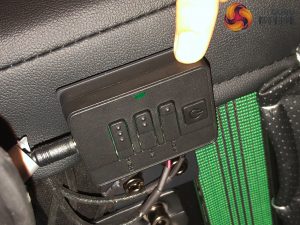This year, Thermaltake is attempting to move up the peripheral market, laying out its plans to have a selection of Tt Premium mice, mouse pads and headsets by Computex in June 2018. Kicking off this trend, the company has unveiled its X1 mechanical gaming keyboard, its X Comfort Air gaming chair and a brand new software utility.
Thermaltake’s X1 mechanical gaming keyboard houses German-made Cherry MX Switches, with Cherry MX Speed (Silver) as standard and a slightly cheaper Blue RGB variant. The top right of the keyboard contains media keys, almost expected from high-end keyboards at this point in time, from the volume rocker to keys that can turn lighting on or off on-the-fly.
RGB is a prominent feature, sitting behind the backlit keys and Thermaltake’s logo in the top left corner. This is controller via the company’s brand new suite of software, built to give users more control over the colour and theme in and around their system.
The software is also built for versatility, as Thermaltake makes it available as an application on iOS. This allows the software to double up as a “virtual controller” for playing games. The company has yet to reveal the library of titles compatibe, but it’s near certain to be restricted to PC games that already have controller support.
We’ve already seen Thermaltake’s X Comfort Air gaming chair back in November, with four 60mm fans built into the seat cushioning to cool the player’s butt. This is complete with a reachable fan controller to the underside of the chair, allowing to quickly change between low, mid and high airflow.
Thermaltake’s X Comfort Air is already available in the US for $500 but will go on sale in the UK later this month for approximately £499. The X1 mechanical gaming keyboard should hit the UK at the end of February, reaching just over the £100 mark for the cheaper Blue RGB Switches and around £10 more for the Cheery MX Speed switches.
KitGuru Says: While I imagine the X Comfort Air to be more distracting than comforting, I am definitely interested. The software is what interests me the most though, as this is one factor that varies wildly between competitors. What do you think of Thermaltake’s push on peripherals?
 KitGuru KitGuru.net – Tech News | Hardware News | Hardware Reviews | IOS | Mobile | Gaming | Graphics Cards
KitGuru KitGuru.net – Tech News | Hardware News | Hardware Reviews | IOS | Mobile | Gaming | Graphics Cards


